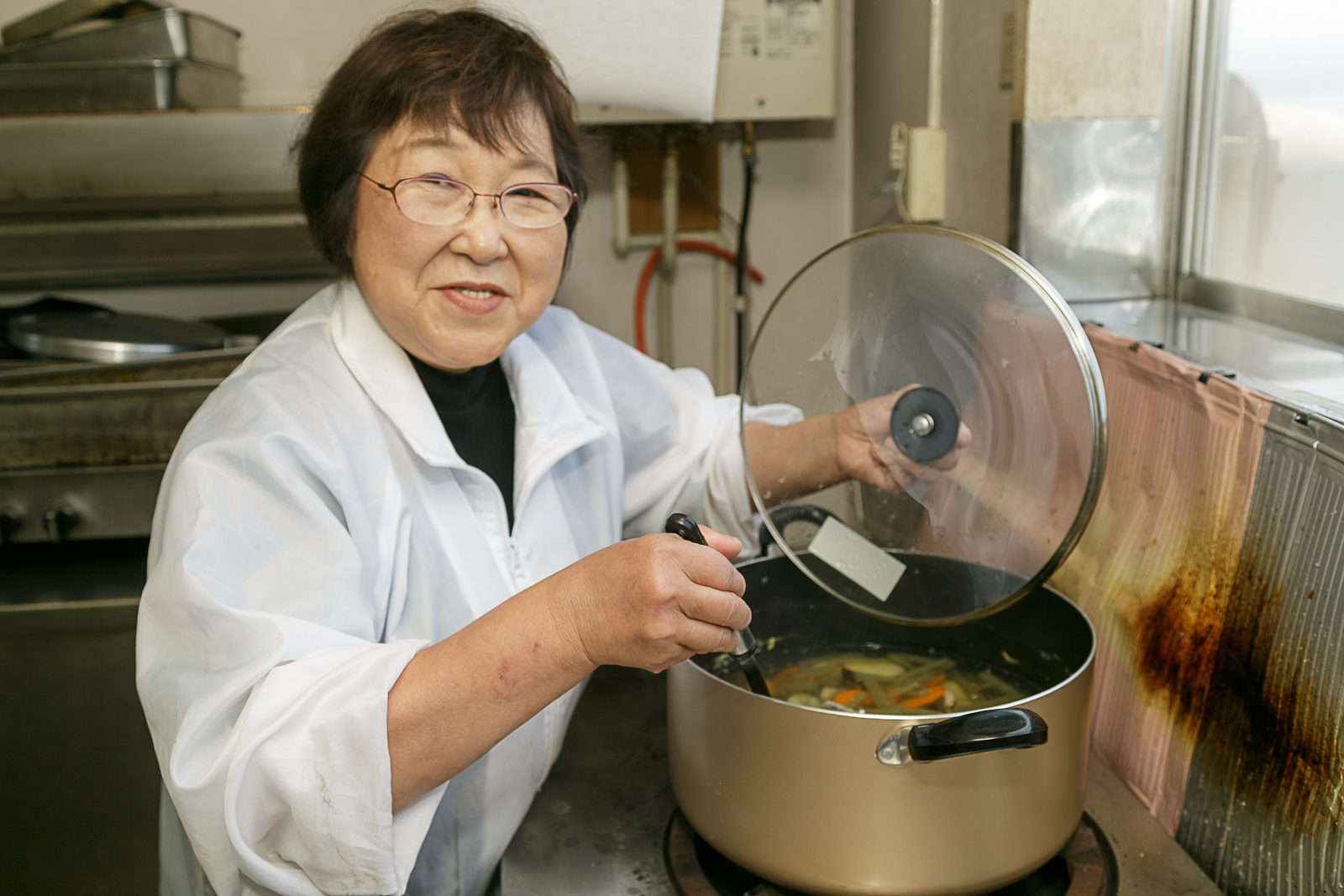
Fujiya Mariko preparing Sampei-jiru soup

Fujiya Mariko preparing Sampei-jiru soup
Nagao Kazuko is a powerful worker and always looks happy even after handing over the farm to her daughter and son-in-law 10 years ago.
Kazuko and the female members of the agricultural cooperative cook a lot of “Koren” every May and June, as it has been handed down from olden times in Esashi. Koren is a rice snack made from steamed glutinous rice, which is thinly rolled out with sugar, salt, and sesame seeds, and then sun dried.

Nagao Kazuko

Oiwake Koren prepared by the Women’s Department of the Esashi Branch of JA (Japan Agricultural Cooperative), Shin-Hakodate
In the past, since it could be preserved for a long time, one year’s worth of Koren was made after the rice-planting season ended. Although essential for life in Esashi, it took time and effort to make Koren, people gradually stopped making it since the 40s of the Showa Period (1965-1975).
The head of the agricultural cooperative at that time was afraid that Koren would disappear if things continued as is, so she called the coop members to make Koren together. Ever since then, orders for this nostalgic snack have been received from all over the country. Today, they are so popular production cannot keep up.
Kazuko says, “Since we cannot do any other work on the day we make Koren, we all have to arrange our schedules, which is not easy. We also need two days of good weather for drying in the sun. We choose a day according to weather and everyone’s schedule and get together. We start steaming the sweet rice at four in the morning and finished the work at about six in the evening. All the work is done by hand and takes a lot of time, but while we make Koren, we can talk and visit together.”

Making Koren at a cheerful workplace (Photo by Ida Yukitaka)

Flattening Koren with a rolling pin (Photo by Ida Yukitaka)

Koren placed in rows on bamboo slats (Photo by Ida Yukitaka)
Next, I visited Fujiya Mariko at her marine product processing factory, Fujiya Gyogyobu. She processes and sells seasonal seafood. Her husband is a fisherman so both live in harmony with the sea.
Esashi, “a town brought to life by prosperous herring fishing” was recognized as a Japan Heritage site. Since few herring were caught in past years, Mariko was asked to create new Esashi herring recipes to promote herring consumption.
“I made sweet stewed herring for Nishin soba (buckwheat noodles) and also tried marinated herring.”

Fujiya Mariko

Sweet stewed herring
According to Mariko, “Locally caught ingredients are used each time. What I make depends on what they catch.” The processing factory is like the town kitchen. She served us Sampei-jiru soup.
“Daikon (Japanese radish), green onion, and potatoes are staples for Sampei-jiru soup and other vegetables are added when in season. Herring is salty, so little salt is added for seasoning.” She said. The amazingly delicious soup stole my heart through my stomach.

Sampei-jiru soup with herring. Two layers of rice with seaweed in the back

Koren, sweet stewed herring, etc. are available


Fujiya Gyogyobu 
36 Tsubana-cho, Esashi Town, Hokkaido, Japan
Tel.: 0139-52-6818
Hours: 9:00 to 17:00 / Closed days not set